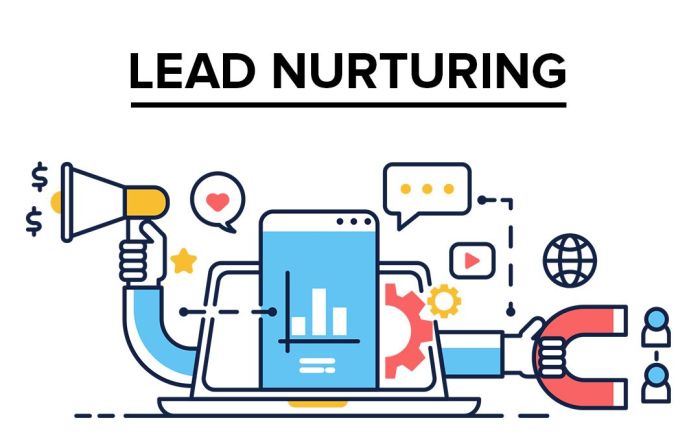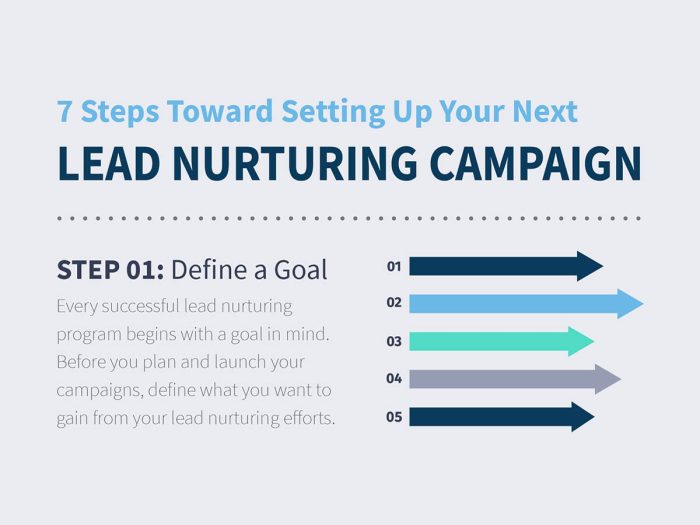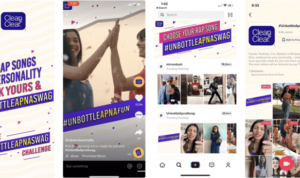Developing a Content Strategy for Lead Nurturing sets the stage for creating killer content that converts leads into loyal customers. Dive into the details of audience understanding, engaging content creation, and the power of marketing automation in this epic journey!
Importance of Lead Nurturing in Content Strategy

Lead nurturing is a crucial component of any effective content strategy, as it plays a vital role in guiding prospects through the buyer’s journey and ultimately converting them into loyal customers. By nurturing leads with relevant and personalized content, businesses can build trust, establish credibility, and foster relationships with potential customers.
Converting Prospects into Customers
- Lead nurturing helps in moving prospects down the sales funnel by providing them with valuable information at each stage of their journey.
- By delivering targeted content based on where the prospect is in the buying process, businesses can address their specific needs and pain points, increasing the likelihood of conversion.
- Consistent communication through lead nurturing ensures that prospects stay engaged and informed, making them more likely to make a purchase when the time is right.
Role of Personalized Content
- Personalized content is key in lead nurturing as it allows businesses to tailor their messaging to the unique preferences and interests of each prospect.
- By delivering content that resonates with the individual needs of prospects, businesses can create a more personalized and engaging experience, increasing the chances of conversion.
- Personalization also helps in building stronger relationships with prospects, as they feel valued and understood by the brand, ultimately leading to higher customer retention and loyalty.
Understanding Your Audience: Developing A Content Strategy For Lead Nurturing

When it comes to developing a killer content strategy for lead nurturing, one of the key elements is understanding your audience inside and out. This involves diving deep into research to identify their needs, preferences, and pain points. By doing so, you can tailor your content to resonate with them on a personal level and guide them through the buyer’s journey effectively.
Research Methods to Understand Your Audience
- Conduct surveys and interviews to gather direct feedback from your audience.
- Analyze website analytics and social media insights to understand their behavior and interests.
- Utilize customer feedback and reviews to gain insights into their experiences with your product or service.
- Monitor industry trends and competitor strategies to stay ahead of the game.
Creating Buyer Personas for Content Strategy
- Develop detailed buyer personas based on demographics, psychographics, and behavior patterns.
- Personalize content to address the specific needs and pain points of each buyer persona.
- Use buyer personas to guide the creation of targeted content that resonates with different segments of your audience.
Aligning Content with Buyer’s Journey Stages
- Awareness Stage: Create content that educates and raises awareness about the problem your product or service solves.
- Consideration Stage: Provide in-depth content that showcases how your offering is the best solution for their needs.
- Decision Stage: Offer content that helps prospects make the final decision to choose your product or service over competitors.
Creating Engaging Content for Lead Nurturing
Creating content that resonates with leads is crucial for successful lead nurturing campaigns. By understanding your audience and their pain points, you can tailor your content to address their needs and provide valuable solutions.
Leveraging Different Content Formats
- Videos: Engage your leads with visually appealing and informative videos that showcase your products or services in action. Keep them short and to the point to maintain viewer interest.
- Blogs: Write insightful and relevant blog posts that offer valuable information to your leads. Use a conversational tone and address common concerns or questions they may have.
- Infographics: Create visually appealing infographics that present complex information in an easy-to-understand format. Use eye-catching visuals and statistics to grab your leads’ attention.
Successful Lead Nurturing Campaign Examples
One successful lead nurturing campaign example is from XYZ Company, where they created a series of personalized email workflows based on the lead’s interactions with their website. By sending targeted content that addressed the lead’s specific needs, they were able to increase engagement and ultimately convert more leads into customers.
Another example is ABC Company, who utilized interactive quizzes on their website to capture leads’ attention and provide personalized recommendations based on their quiz results. This interactive approach not only engaged their leads but also helped them gather valuable insights into their preferences and pain points.
Utilizing Marketing Automation for Lead Nurturing
In the world of lead nurturing, marketing automation tools play a crucial role in streamlining efforts, saving time, and increasing efficiency. These tools help businesses automate repetitive tasks, personalize communication, and track interactions with potential leads.
Setting Up Automated Workflows for Lead Nurturing Campaigns
Automated workflows are a key component of successful lead nurturing campaigns. By setting up these workflows, businesses can create a series of touchpoints that guide leads through the sales funnel. Here are some steps to set up automated workflows:
- Identify your target audience and segment them based on their behavior and interests.
- Create personalized email sequences that are triggered based on specific actions taken by leads.
- Set up lead scoring to prioritize leads and determine when they are sales-ready.
- Integrate your CRM system with the marketing automation platform to ensure seamless data flow.
Integrating Marketing Automation with Content Strategy for Lead Nurturing, Developing a Content Strategy for Lead Nurturing
Integrating marketing automation with your content strategy is essential for a successful lead nurturing campaign. Here are some best practices to follow:
- Map out your content to align with the buyer’s journey and create targeted content for each stage.
- Use dynamic content to personalize messages based on lead behavior and preferences.
- Track and analyze the performance of your content to make data-driven decisions and optimize your strategy.
- Continuously test and refine your automated workflows to improve engagement and conversion rates.





